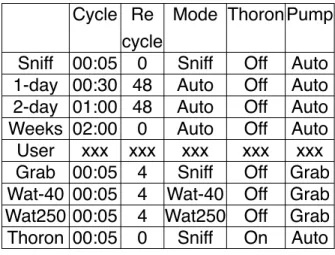RAD7 RADON DETECTOR
Volltext
Abbildung

ÄHNLICHE DOKUMENTE
In summary, the absence of lipomatous, sclerosing or ®brous features in this lesion is inconsistent with a diagnosis of lipo- sclerosing myxo®brous tumour as described by Ragsdale
a certain graph, is shown, and he wants to understand what it means — this corre- sponds to reception, though it involves the understanding of a non-linguistic sign;
focal population with a genotype adapted to the absence of the partner, and
For many Muslims, the self-declared Caliph of ISIS/Daesh is in a similar position – he has no legitimacy to make these claims, is not behaving as a Caliph should, and is
countries is likely to be small as documented in ECFIN study of surplus economies 4 . Even a sizeable reduction in the German surplus would lead
While this doctrine is not an exception to United Nation’s Article 2(4), 17 it is also equally clear that contemporary international law, and the UN Charter prohibit states
(Quelle: Ministerium für Bildung Sachsen-Anhalt, Zentrale Klassenarbeit 2013 Gymnasium Englisch
the RP-DYP coalition government where they did frequent references to political corruption in general and the Case of Mercumek in particular, the report issued by